Leadership used to be about stability. Clear goals, consistent systems, a steady pace. But the world has changed—and so has the workforce. Today, leaders aren’t just managing people; they’re shaping environments where people want to stay, grow, and contribute.
That’s no small feat.
The question every organization should be asking today isn’t, “Do we have a good culture?” It’s deeper:
“Is our culture keeping up with our business—and our people?”
At Mosaic Consulting Group, we’ve worked with hundreds of companies navigating this exact crossroads. And the most successful leaders we’ve partnered with have one thing in common: they’ve learned to treat culture not as a backdrop, but as a strategic force.
Let’s break that down.
Culture Isn’t an Add-On. It Is the Strategy.
When we say culture, we’re not talking about foosball tables or company slogans. We mean the shared behaviors, systems, and values that shape how work actually gets done—day by day, decision by decision.
Strong culture doesn’t just make people feel good. It:
-
Reduces friction across teams
-
Creates alignment between departments
-
Supports better, faster decision-making
-
And ultimately drives business results
But here’s the catch: culture isn’t static. It shifts alongside your workforce, your market, and your leadership. If it doesn’t evolve with intention, it will evolve on its own—and not always in the direction you want.
So, What Does It Take to Lead Effectively Right Now?
1. Redefine Sustainability in Human Terms
We often think of sustainability as an environmental goal. But what about human sustainability?
What does your workforce need—not just to perform—but to exist and stay healthy in today’s environment?
That means:
-
Building DEI into the foundation of your policies
-
Supporting employee mental and physical health
-
Investing in long-term career development
-
Creating space for meaningful work-life balance
When organizations take these elements seriously, retention rises, engagement deepens, and performance improves.
It’s not just the right thing to do—it’s a business advantage.
2. Create an Atmosphere, Not Just a Mission Statement
If culture is the air people breathe at work, is yours fresh—or filtered?
It’s easy to post company values online. But do they show up in your day-to-day experience?
Ask yourself:
-
Are leaders modeling the behaviors they expect?
-
Do employees feel psychological safety when offering ideas?
-
Are communication and collaboration really happening across departments?
These questions aren’t soft—they’re strategic. Because how your employees feel directly impacts how your business performs.
Culture should be an atmosphere—something people feel the moment they walk in, whether it’s a virtual meeting or the office door.
3. Make Individual Growth a Business Priority
People don’t just want jobs anymore—they want pathways.
And while not every employee is chasing the C-suite, every employee wants to know their development matters.
This starts with data. Tools like culture gap analysis, skills mapping, and engagement diagnostics help you understand what your workforce actually needs—not just what you assume they do.
From there, you can:
-
Design training that meets employees where they are
-
Build career paths that align with both personal and business goals
-
Create a culture of internal mobility and continuous learning
Supporting growth isn’t a “perk.” It’s how you create loyalty—and unlock performance at scale.
4. Zoom Out—and Then Zoom In
Many companies still manage culture from the top down. But the real signals often start below the surface.
Are your most innovative employees stuck in rigid roles? Are your rising stars overworked and under-supported?
Mature leadership means marrying the macro (strategy) with the micro (real-time behavior). It’s knowing what’s happening across the business—and deep within it.
When you align vision with lived experience, culture becomes more than a concept—it becomes a competitive advantage.
5. Let Tech Work With You, Not Instead of You
The future of leadership is tech-enabled—but not tech-replaced.
Whether it’s AI, people analytics, or talent intelligence, modern tools give leaders clarity, speed, and precision. But they’re only powerful when used to amplify human insight, not replace it.
Ask:
-
Are we using analytics to understand turnover before it becomes a problem?
-
Are we automating workflows to create more space for connection and creativity?
-
Are we giving our people tools that make their lives easier—or just adding noise?
The answer to sustainable culture often lies in how you combine humanity and technology—not choose between them.
Why This Matters More Than Ever
Your people are your culture. Your culture is your strategy. And your strategy is only as strong as your leadership.
In a world where change is constant and employee expectations are higher than ever, organizations that listen, adapt, and lead with intention will outperform those that rely on legacy systems and assumptions.
You don’t need all the answers—but you do need the right questions.
That’s where Mosaic comes in.
How Mosaic Helps Leaders Lead Better
At Mosaic Consulting Group, we help leadership teams align strategy, people, and systems through our Culture Consulting services. Whether your organization is scaling fast or recalibrating for the future, we partner with you to:
-
Align HR strategy with your long-term business goals
-
Build leadership pipelines and internal talent mobility
-
Improve employee experience and engagement
-
Guide change management through clear, strategic frameworks
-
Use data to drive smarter decisions and better outcomes
You already have a vision for where you want to go. Let’s make sure your culture—and your leadership—are ready to carry it forward.
Ready to build a workplace designed for what’s next?
Contact Mosaic Consulting Group to begin your leadership evolution.

